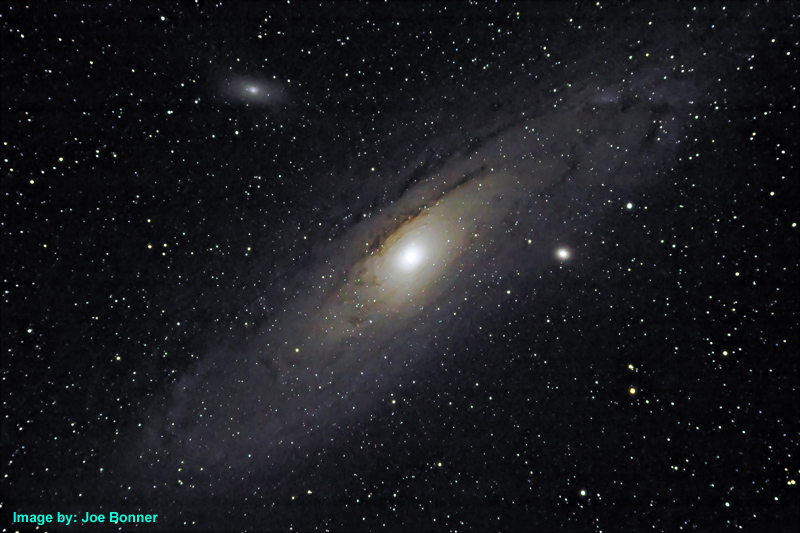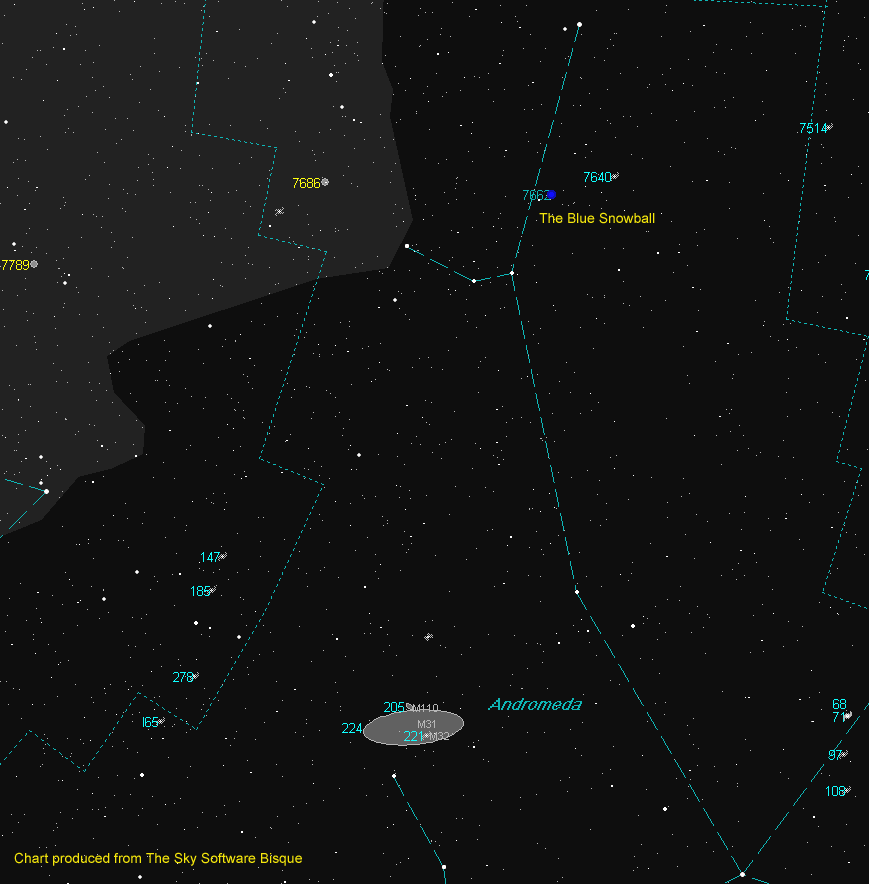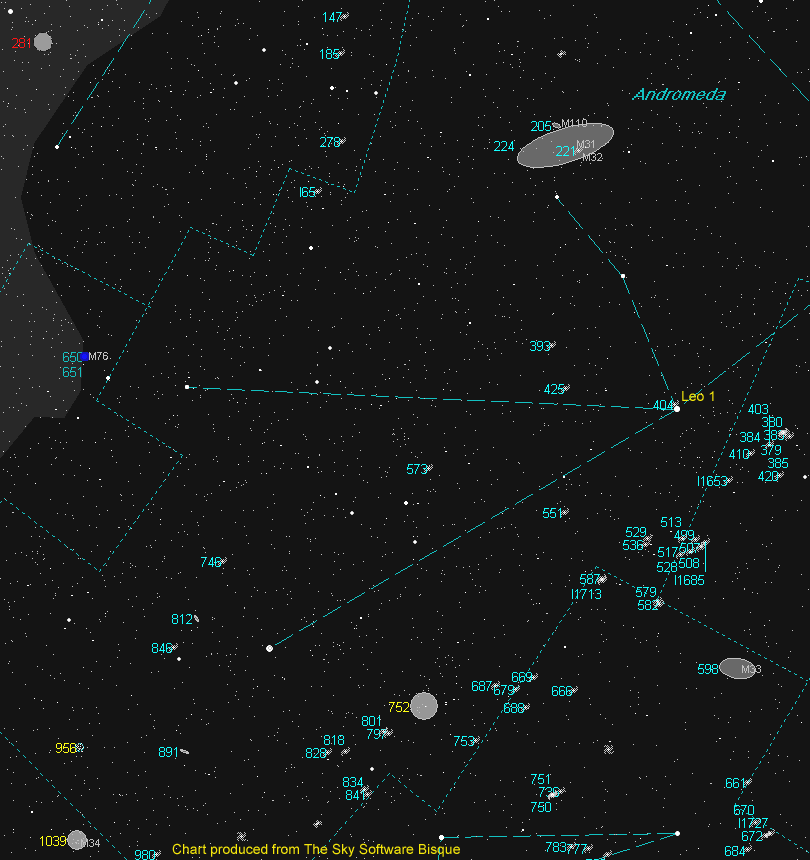Our Neighbouring Galaxy
Most constellations are home a spectacular deep-sky object. Hercules has M13 a great globular cluster. Lyra has the Ring Nebula the ghostly remains of a star and Perseus has the Double Cluster two open clusters of stars that can be seen naked. Andromeda is no exception with a slightly different twist. In almost all cases, the celestial wonders are located in our galaxy. Whereas M31 also known as the great Andromeda Galaxy is the closest galaxy to us and is located some 2.9 million light-years from us. From a cosmic perspective, that is close.

The Andromeda Galaxy is estimated to be 250,000 light-years in length which is 2.5 times ours and harbours two smaller satellite galaxies catalogued as M32 and M110. The most striking feature is seeing M31 without optical aid under dark sky conditions. Visually, we see the concentrated area towards the nucleus but photography registers the fainter parts of the starry disk. Its overall length is three degrees or six full moons placed side by side.

The galaxy is also home to numerous globular clusters to which a few are observed visually with photography needed to locate the fainter ones. With a telescope and a wide-angle eyepiece, one or two dust lanes are quite evident along with NGC 206 – a bright “star cloud” located at the galaxy’s edge near M32. From M31 move down the chain of three stars to the bright star Mirach. Here is a magnitude 2.07 spectral class M0 star residing 200 light-years from Earth. From here, try to put the star just outside the field of view to spot NGC 404 also called Leo 1. In fact, this isolated dwarf lenticular galaxy is found only seven arc minutes from Mirach. The galaxy itself is some ten million ly away and glows at magnitude 11.2.

Moving to the southern part of Andromeda, we come to a very old open cluster. NGC 752 is estimated to be 1.6 billion years old. At magnitude 5.7 it is naked-eye visibility and resides some 1,300 light-years away. Before leaving the area, you must stop by M33 in the constellation Triangulum. This face-on galaxy also called the “Pinwheel Galaxy” is estimated to be three million ly away thus making it the second in distance from us after the Andromeda Galaxy. The galaxy is teeming with young blue star clusters and numerous pink star-forming regions.
Another fantastic galaxy seen edge-on is NGC 891. First locate the double star Almach located 350 light-years from us comprised of a blue and yellow star, much like Albireo in the constellation Cygnus. From here continue a little more than three degrees east. NGC 891 measures 100,000 light-years wide, same as our Milky Way Galaxy and is an estimated 30 million ly away. The galaxy is classified as an unbarred spiral galaxy. It is also home to supernova 1986J which rose no brighter than magnitude 14. The supernova was discovered on August 21, 1986. Moving to the northern portion of Andromeda, we find NGC 7662 dubbed the “Blue Snowball”. Astronomers estimate this planetary nebula is 1,800 ly away and some 20,000 AU wide. Large telescopes might allow you to see the 13th magnitude central dwarf star.

Although we still have all four planets low in the sky after sunset, Jupiter will be lost very soon in the solar glare and in conjunction with the Sun on the 26th. On the evening of Sept 2, the very thin waxing 2% crescent moon will nudge up to the left of Jupiter with Venus to the upper left and a few degrees away. This should make for a great digital moment. Over the month, Venus keeps climbing the western sky. Looking over in Scorpius, Saturn is also appearing lower each night whereas Mars is racing eastward and dimmer as the weeks move on and our distance increases.
For the first two weeks of the month look for the Zodiacal Lights in the eastern skies before dawn. Spring and fall are the best times of the year to see the interplanetary dust lit by sunlight. The change of season is upon us as autumn officially begins on Sept 22 at 10:21 eastern time. This also marks the first day of spring for the southern hemisphere. This month’s new moon (lunation 1159) occurs Sept 1 with the Full Harvest Moon on the 16th at 15:05 eastern time.
Until next month, clear skies everyone.
Twitter: @astroeducator
